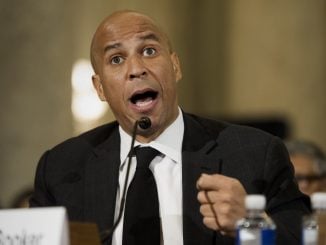WASHINGTON, D.C. — While many Democrats are focused on winning back several Rust Belt states that backed President Donald Trump in 2016, a progressive group plans to spend $50 million to make sure the party doesn’t overlook opportunities in the Sun Belt.
The group, Way to Win, will focus much of their effort on helping Democrats in states including Georgia, Arizona, Texas, Florida, Virginia and North Carolina, where the party hopes to make inroads with people of color, women and young people. The group’s leaders will outline their plans at a donor retreat in Arizona on Monday. An advance copy of their blueprint provided to The Associated Press details an effort focused less on top-level races than building infrastructure that could help up and down the ballot — and for years to come.
“It’s preparing to win not just in 2020, but to build power in the long term,” said Tory Gavito, who is president and co-founder of Way to Win, which was founded after President Donald Trump’s 2016 win.
Their task will be difficult to achieve. Democrats haven’t carried some of these states at the presidential level in decades and have had only limited success in statewide races. In some places, the party’s organization is suffering from years of neglect as Republicans have solidified their grip on power.
But Way to Win says Trump’s unconventional re-election strategy, which is focused on driving turnout among those who support him but don’t often vote, adds a degree of unpredictability that means Democrats can’t take any state for granted.
“It’s a threat,” Gavito said. “2020 is a race to drive up the most new voters possible. Our job is driving forward the new electorate in the South and Southwest.”
Florida offers a cautionary tale, group leaders say. The state is a perennial battleground, but Republicans have consistently held power in recent years. Gavito says that’s because national Democrats have historically rolled in, spent big on TV advertising during marquee races, but left behind an infrastructure that atrophies in the off-years.
“They have millions of young people and people of color sitting on the sidelines because it’s an every four-to-two-year proposition,” she said. “That’ not community building; that doesn’t create your base for the long-term.”
The group presents itself as a progressive alternative to established Democratic organizations and is largely funded by a network of women, including Susan Pritzker, a member of a prominent Democratic family who have long supported Democratic causes and derive their fortune from Hyatt Hotels.
Way to Win operates a PAC that donates directly to candidates, but most of their work is done through two nonprofit groups that do not have to disclose their donors.
During the 2018 midterms Way to Win spent $22 million and partnered with existing organizations in its targeted states. The belief, they say, is that local organizations know their communities best and can help target people who have been overlooked.
For years, Democrats have talked up the opportunity presented by population shifts in Southern states, though success has often been elusive. The once-a-decade redistricting that will follow the 2020 census offers a chance to make inroads, so long as Democrats are able to gain more power in legislatures, which typically control the redrawing of congressional districts.
The three Rust Belt states at the center of the presidential campaign are 76% white, according to U.S. Census data. Arizona, Georgia, North Carolina and Texas have a higher share of minorities than those Midwestern states.
Faster growing, they’ve attracted younger, and more educated, people from other parts of the country and enjoy booming economies, while the Rust Belt states are managing aging populations and declining industrial towns.
That offers an opportunity.
“Supporting grassroots organizations that are there all the time and focusing giving on states that in the past have been ignored is important,” said Margery Loeb, a Texas philanthropist who is a donor.



